Gold Coast City Council Budget 2023-24: Everything you need to know about project funding
More than $35m of ratepayer funds have been locked in to extend the light rail, among 10 key projects to receive funding in the council budget as city leaders warn the Gold Coast “needs help”.
Council
Don't miss out on the headlines from Council. Followed categories will be added to My News.
More than $35m of ratepayer funds have been locked in to extend the light rail as city leaders warn transport funding will increase to record levels in coming years.
Council budget papers reveal $8.8m has been put aside for the planned Burleigh Heads to the border tramline on top of $27m for the under-construction Stage 3 from Broadbeach to Burleigh.
Mayor Tom Tate said the council was stockpiling the funding to allow construction of bridges across Currumbin and Tallebudgera creeks to begin ahead of the rest of the multi-billion tram project.
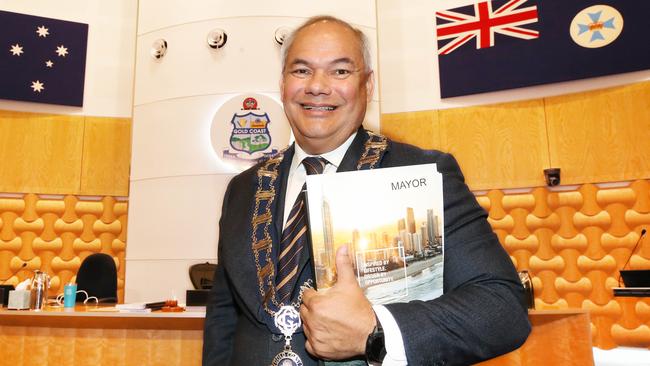
“I think it is responsible to build our transport infrastructure ahead of the population growth because these projects take time,” he said.
“We have a record spend and we will keep going, I will recommend to the next council (after the 2024 election) to get ahead of the curve on infrastructure spending so that as it grows, our lifestyle is not diminished.
“With light rail Stage 4, we may as well have it done far in advance so people can use the wonderful service we have got. It makes sense to get on board, and get on board early.”
A business case on the border extension is currently being finalised.

Sources close to the project expect council and state funding to be locked in by the end of 2024, with federal funding likely to follow in the pre-election 2025 budget.
This would allow construction to begin in 2026 or early 2027 before being completed in 2030, enabling trams to be tested and bedded-in before the 2032 Olympic Games.
The budget also contained a series of strong transport investments including:
* $54m, for road resealing across the city.
* $14.2m for the upgrade and construction of a new bridge at Pimpama’s Yawalpah Road
* $8m for the upgrade of the intersection of Wardoo and Cotlew streets in Ashmore
* $7m for the transformation of a roundabout at the intersection of Laver and Robina Town Centre drives into traffic lights.
* $6.3m for the upgrade of Ormeau’s Eastern Service Road.
*A $5.9m “one-off” funding contribution to complete the upgrades to Muriel Henchmen Drive and its park precinct as part of the council’s contribution to the Spit Masterplan
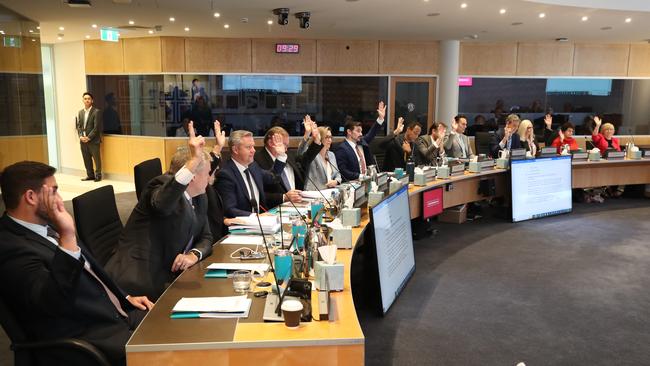
The budget papers warn the Gold Coast’s dramatic population growth was having a significant impact on the city’s roads and transport network.
“In the last 10 years, the Gold Coast population grew by 23 per cent, which equates to 220,000 extra daily car journeys on our roads every year,” it reads.
But with such significant population growth, Deputy Mayor Donna Gates warned greater funding partnerships would be needed to expand and improve roads in the city’s north.
“The traffic does not move in the mornings between Hope Island Road all the way to the centre of Surfers Paradise so this year we have focused on Yawalpah Road but we do need to call on the state government to work the M1 because unless we can get traffic on and off the M1, our roads will continue to be congested,” she said.

“Given the community feedback, we are making an exceptional effort this year”.
Ms Gates warned there would be tough times ahead as the population growth continued to congest the city’s roads.
“We know we are in for more pain, especially in the northern Gold Coast and the Coomera Connector which will dump traffic onto Foxwell Road, which is already clogged,” she said.
“We are looking at three new hospitals in that precinct, the Coomera Connector arriving by 2027 and possibly 4000 new dwellings on the largest parcel of land ever sold in recent memories so we need the state and federal governments to recognise we need help with these major arterial roads.
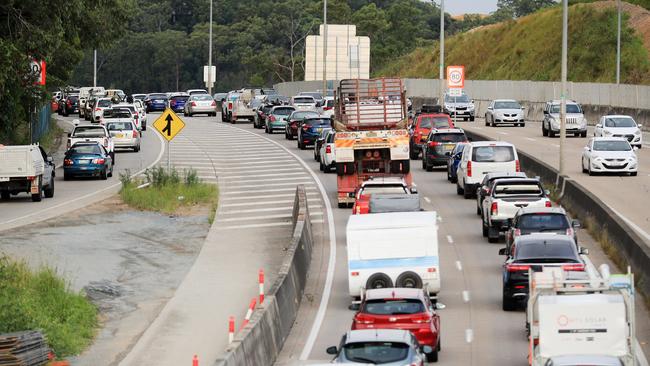
“We need one to cross the M1 in the northern Gold Coast so there is another means of getting from the north to the south.”
Mr Tate said his message to both side of politics at a state and federal level was to invest in the region rather than hold back funding, saying they would get a return on this cash rapidly.
“If you look at southeast Queensland, one in seven voters is here and we want our lifestyle to be protected,” he said.
“They will add value and broaden the economy.
“Now is the time to invest and I used that word deliberately because the value uplift from people coming here translates to land tax, employment tax and GST so they will get their money back.
“We have the biggest property uplift here and they will get it back”.
10 KEY GOLD COAST PROJECTS
* Pimpama: Road Upgrade and Bridge Construction at Yawalpah $14.2 million.
A new three-lane road bridge will be built over the existing railway line while Yawalpah Road will be widened. Early works are already underway, with the bulk of construction expected to begin in late 2023.
* Coomera: Viney Park Upgrade $5.1 million.
This 6.6ha sporting ground has long been identified as needing an upgrade to cope with the city’s dramatic population growth. It will increase the capacity for sports at the parklands, while altering the layout to make room for more carparking, footpaths and playgrounds, as well as an improved playing surface. Work is expected to be completed in late 2024.
* Surfers Paradise: Redevelopment of Cavill Mall starting at $1.76 million.
The epicentre of the city’s party precinct has received a small portion of funding which will be targeted at upgrading and improving Cavill Mall. Little detail has been released about the size and scope of the works but it will form part of the first stage of the Surfers Paradise masterplan.
* The Spit: Federation Walk littoral rainforest, $2.7 million.
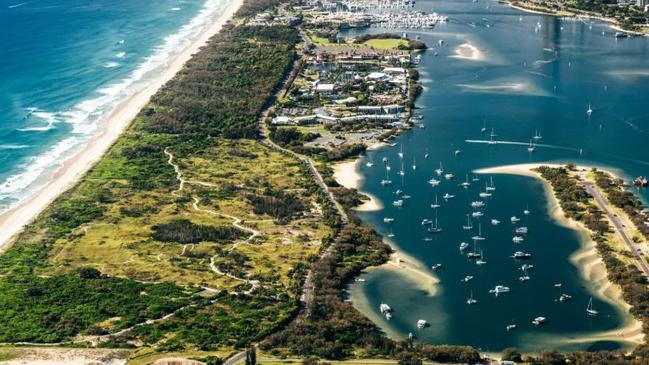
A joint project with the state, it will be spent on protecting and improving 37ha of endangered rainforest and coastal vegetation on The Spit. Around $8m will ultimately be spent over a decade to restore the area, with a core of native forest to be created in the northern Spit.
* Ashmore: Upgrade of intersection Wardoo Street and Cotlew Street $8.0 million
The upgrade, which began in July 2022, will completely reconstruct Cotlew street’s roads and footpaths between Parasol Street and Benowa Road to help manage and lower traffic congestion in the area. The work, which will finish in early 2025, is expected to cost $19m and will also see traffic lights replace the existing roundabout at the intersection of Wardoo and Cotlew streets.
* Burleigh and Palm Beach: Light rail Stage 3 and 4 $35.8 million.
The bulk of this funding will cover the council’s contribution to Stage 3, which is under construction between Broadbeach and Burleigh Heads. Around $8.8m has been put aside for Stage 4, with the council planning to build bridges for the trams cross Tallebudgera and Currumbin Creeks if state and federal funding can be secured.
* Robina: Upgrade of roundabout to traffic signals at Laver Drive and Robina Town Centre Drive $7.0 million.
Some of the most congested roads in the city’s central region, the existing roundabout which was built in the 1990s during Robina’s early days will be removed and traffic signals installed. This was named as a key project to reduce congestion and prepare the suburb for hosting one of the athletes villages at the 2032 Olympic Games.
* Robina: Greenheart, first stage of parklands $17.5 million
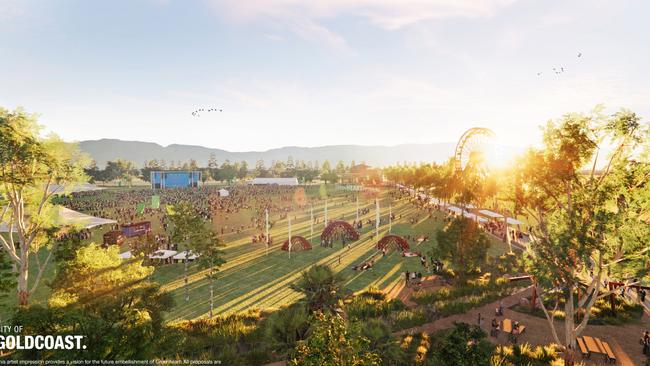
Early works have begun on stage 1 of the project, which will create a 17ha park in central Robina. A giant events lawn able to host community events and concerts will be the centrepiece of the first stage, which will also include a yoga law, new cafe and change rooms, two playgrounds and a water play area.
* Mudgeeraba: Firth Park Netball Upgrade $2.1 million
The Mudgeeraba Sports precinct will be upgraded and expanded to turn it into a “high performance” netball centre. The number of courts will be expanded from 17 to 24, allowing it to host more competitions.
* Palm Beach: Redevelopment of Aquatic Centre $50.1 million.
The budget contains the bulk of funding for the southern Gold Coast aquatic centre’s upgrade, which is on track to be completed in mid-2024. The original 1977-era pool and buildings were demolished to make for a giant new 50m pool, a 25m heated outdoor pool and other facilities.
REVEALED: HOW MUCH GOLD COAST RATES WILL JUMP JULY 1
Gold Coast rates are to be increased by 5.5 per cent with the city council putting off a spend on big ticket items and responding to cost-of-living pressures.
The increase in rates for 2023-24 will be almost two per cent below the official Consumer Price Index.
Council last year approved a 4.3 per cent rate increase for the 2022-23 financial year, the equivalent of about $3.11 a week. The average general rate was $3903.58 – up from $3742.
The 2023-24 rate rise will see about $200 added to the average rate bill.
The average rates bill will now by $4016.
Mayor Tom Tate outlined the increases in his budget speech at the Evandale Chambers on Monday.

Councillors and officers had “worked tirelessly” to find savings in every aspect of the $2.2 billion City Budget, he said.
“Council’s costs to deliver world-class infrastructure and services have also risen substantially, just like the costs for families and small businesses. We have worked to offset as much as we can, ensuring we maintain our 11-year record of low-rate increases,” he said.
“Since 2012, every annual rate increase (principal-place-of-residence) has been at, or below, CPI and this year we have delivered a rate increase of 5.5 per cent, almost two per cent below the official CPI (7.42 per cent).
“I applaud councillors and the administration for their efforts in shaping our 2023-24 City Budget.”
Mr Tate told the Bulletin the City would deliver value-for-money for its operational and delivery areas with debt around $595 million.
“This represents the lowest per capita debt of any metropolitan council the size of the Gold Coast,” he said.
Mr Tate said Gold Coasters had responded “in record numbers” to the draft budget survey.
“More than 6100 locals had their say. The key areas they wanted council to focus on were the road network, parks and natural areas, parking and community safety. This budget responds with a record $777 million investment in capital expenditure across all areas of our operations.’’
The key budget highlights are:
* Providing safe and reliable drinking water — $288.68 million.
* Waste collection and disposal services — $98.52 million.
* Safe and reliable sewerage services — $217.74 million.
* Recycling services — $45.58 million.
* Transport and infrastructure — $378 million.
* Community safety and lifestyle — $204 million.
* Green space and environment — $243 million.
* Business and economy — $120 million.
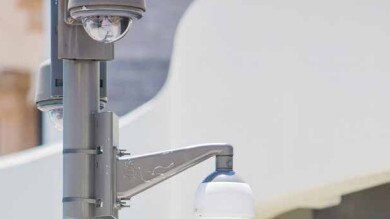
Both the Mayor and Deputy Mayor Donna Gates described the budget process as the smoothest in recent years, thanking new CEO Tim Baker the administration.
“It’s probably been a smoother process than ever before. We do appreciate everyone is doing it tough,” Cr Gates said.
Community Alliance leader John Hicks said ratepayers wanted a fair budget that benefited the wider community “and not just the big end of town”.
He added that residents wanted increased funding to include more recreational public open space purchases.
“We need public open space to keep pace with city’s rapid growth,” Mr Hicks said.
How city will fix Gold Coast’s road congestion crisis
Millions of dollars in key road projects will be fast-tracked to construction in Monday’s Gold Coast City Council budget to cope with the dramatically growing population.
Funding for capital works will be ramped up to record levels in the $2.2bn budget, which has been reshaped to focus on projects which can be delivered in the next financial year with minimal impact from supply chain shortages.
Council charges are expected to rise by around 5 per cent, or around $200 extra added to the annual rates notice.
Mayor and budget boss Tom Tate described it as a “budget of contrasts” which was the “most complex” during his 11 years in power.
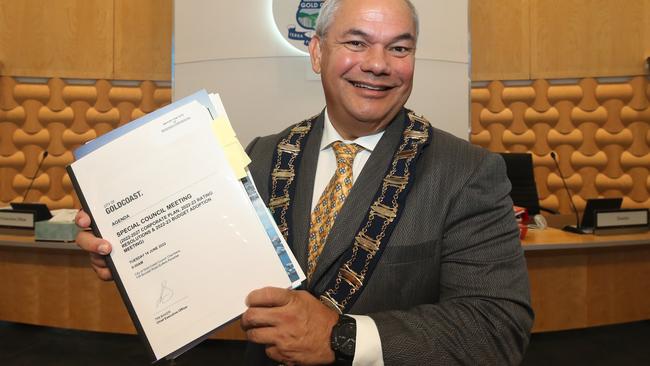
“In this ‘budget of contrasts’, council’s operating costs have risen substantially – just like the family home, so to arrive at an average increase below CPI, every councillor has worked line-by-line through our largest ever $2.2 billion annual budget to find savings without impacting frontline services,” he said.
“We have achieved that and I am pleased that our 2023-24 budget will invest a record amount in capital expenditure to ensure the facilities and services ratepayers expect are not only maintained but enhanced.
“Our city’s lifestyle is underpinned by our open and green space. Without room to grow, relax and explore, the Gold Coast would lose its shine.”
The road funding comes months after it was revealed that traffic on roads in the city’s north which feed into the M1 had almost doubled in the past year.
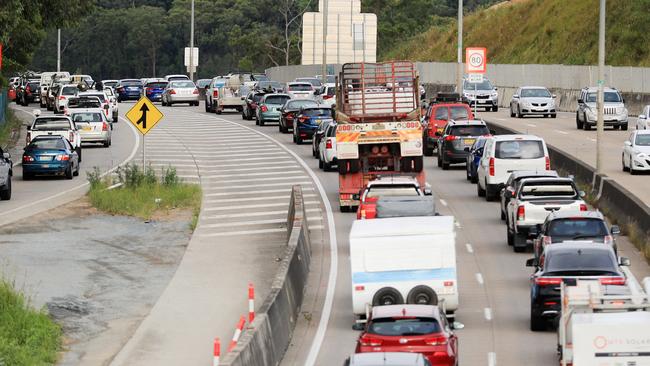
The new data revealed some council roads are recording average daily counts of more than 30,000 vehicles, sparking calls for more spending.
This year’s rates rise will still fall below the seasonally adjusted CPI level of 7.1 per cent recorded in April.
However it will be above the 4.3 per cent rate increase for the 2022-23 financial year, the equivalent of about $3.11 a week. The average general rate was $3903.58 – up from $3742.
It is understood that council officers tested every single project proposed for inclusion in the budget to see whether it was feasibly possible for delivery in the next year.
“There will be an uptick in spending on areas of road reconstruction and resealing, as well as funding for big sporting and park projects brought forward to deal with the pressures of population growth,” a council source said on the eve of the budget’s deliver.
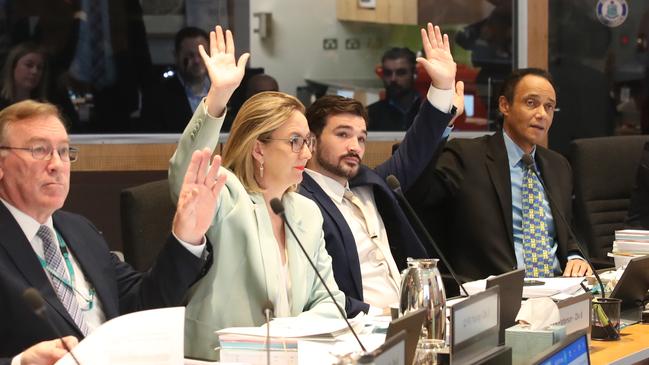
“Overall, the council’s spending will be the same but the delivery of those funds will be quite different from previous years.”
The removal of the controversial Yatala lights display on the M1 will be funded as part of the budget, which will be delivered by Mr Tate at the Evandale council chambers on Monday morning.
The mayor acknowledged global economic issues were significantly impact the city, including increasing energy, food and building material costs. But he argued the fundamentals of the economy remained strong.
“Over the last 11 years, council has delivered successive low rate budgets and I made it clear when elected mayor in 2012 that the era of double-digit rate increases was over,” he said.
“From 2012 onwards, the new council ‘mantra’ meant any rate increase must be kept at, or below, CPI.
“At the same time, our city economy is performing well across many sectors, with tourism on the rebound, the health and knowledge industry continuing to expand, international students returning, more than 40 cranes in the sky and the marine sector is on fire as our arts sector diversifies.”




